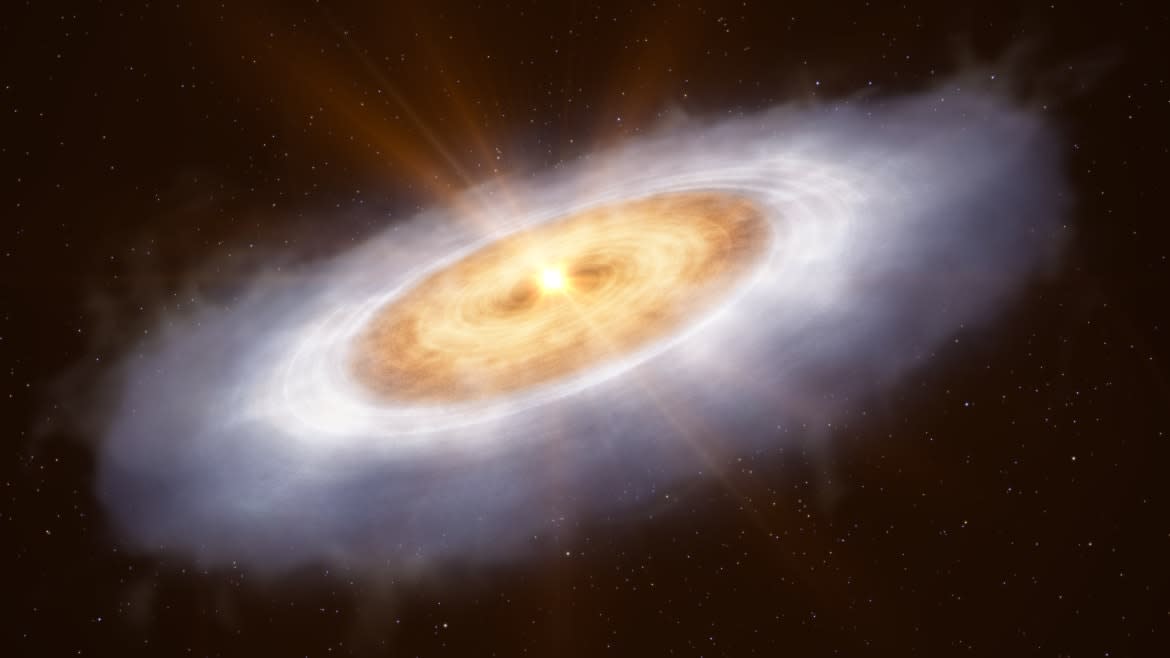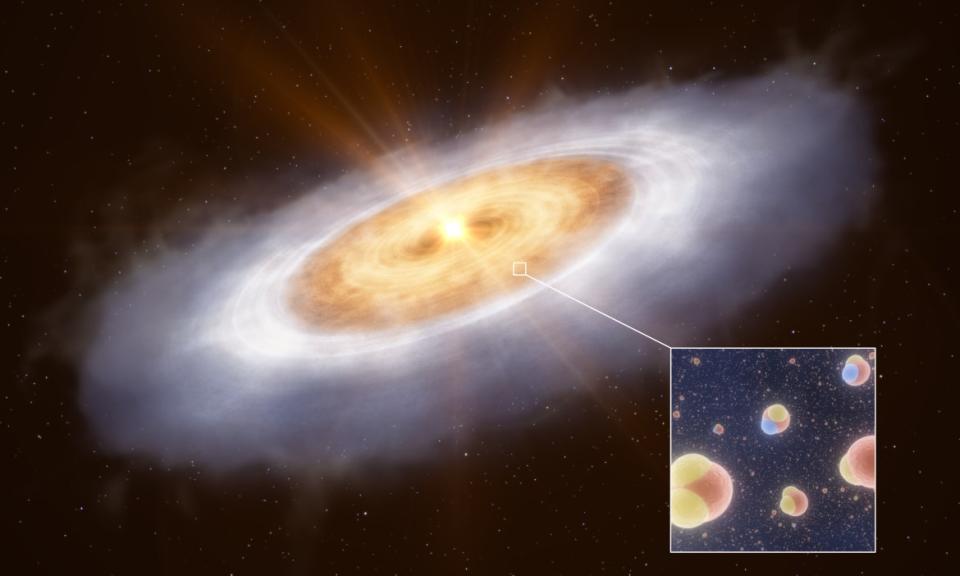This Distant Star May Hold the Secret to Water—and Life—on Earth

Without water, life on Earth as we know would be impossible. Organic molecules wouldn’t have been able to form into living, reproducing bacteria, which would have never evolved later on into more complex systems like fish and humans. We’d also never have had the privilege of living in a world where pole dancing has made its way into VR (seriously).
But how did Earth get its water? That’s been the mystery scientists have spent more than a century trying to crack. We know that water is not unique to Earth—we’ve found it on the moon, on Mars, and even more distant worlds. Prevailing theories suggest water may have actually been delivered to Earth by a bombardment of comets and asteroids in the early days of the solar system.
Now, a new study published Mar. 8 in the journal Nature reveals that the answer may lie in the discovery of gaseous water around the star V883 Orionis, about 1,300 light-years away from Earth. This water carries a tantalizing chemical signature that actually suggests water on Earth originated from V883 Orionis, and eventually made the journey to our planet by hitchhiking on comets.
The Chances of Finding Alien Life on Jupiter’s Moon Europa Just Shot Way Up
This new piece of the puzzle suggests that water on Earth is even older than the sun itself. Moreover, it supports the idea that other potentially habitable planets may have been watered by V883’s gas clouds, or similar reserves around other stars.
“We can now trace the origins of water in our solar system to before the formation of the sun,” John J. Tobin, an astronomer at the National Radio Astronomy Observatory, and lead author of the new study, said in a statement.
You know from chemistry class that a molecule of water is made of two hydrogen atoms and one oxygen atom. But not all water is created equal—sometimes the hydrogen atoms carry some extra weight (in the form of additional neutrons) and are heavier than their standard counterparts. One heavier form of hydrogen is called deuterium, and water with deuterium is formed under different conditions than normal water. When the ratio of deuterium to hydrogen is particularly high, scientists can determine when and where the water was formed.

Two kinds of water molecules were studied in this disc: normal water, with one oxygen atom and two hydrogen atoms, and a heavier version where one hydrogen atom is replaced with deuterium.
Using the Atacama Large Millimeter/submillimeter Array (ALMA) in Chile, scientists studied the gaseous water hanging around V883 Orionis, particularly in areas closer to the star where the heat makes it easier to analyze the chemical signatures emanating from water.
What they found was that the composition of the water around V883 Orionis “is very similar to that of comets in our own solar system,” said Tobin. “This is confirmation of the idea that the water in planetary systems formed billions of years ago, before the sun, in interstellar space, and has been inherited by both comets and Earth, relatively unchanged.”
In fact, V883’s clouds seem to house more than 1,200 times the total amount of water in all of Earth’s oceans. It’s not difficult to imagine the distant star system was a reservoir not just for Earth, but other worlds as well.
As a result, finding other potentially habitable worlds may be a matter of better understanding the journey of water from V883 to other places. If we can nail down what this delivery system has looked like over time, it may be possible to constrain what other planets could be home to life.
Got a tip? Send it to The Daily Beast here
Get the Daily Beast's biggest scoops and scandals delivered right to your inbox. Sign up now.
Stay informed and gain unlimited access to the Daily Beast's unmatched reporting. Subscribe now.

